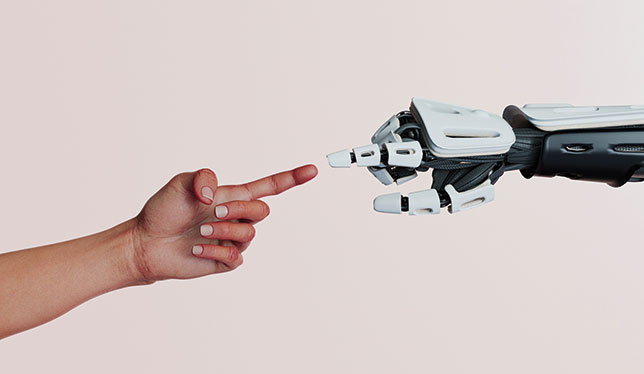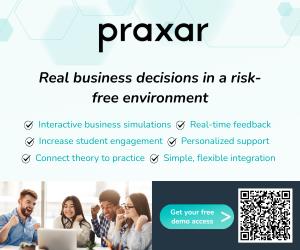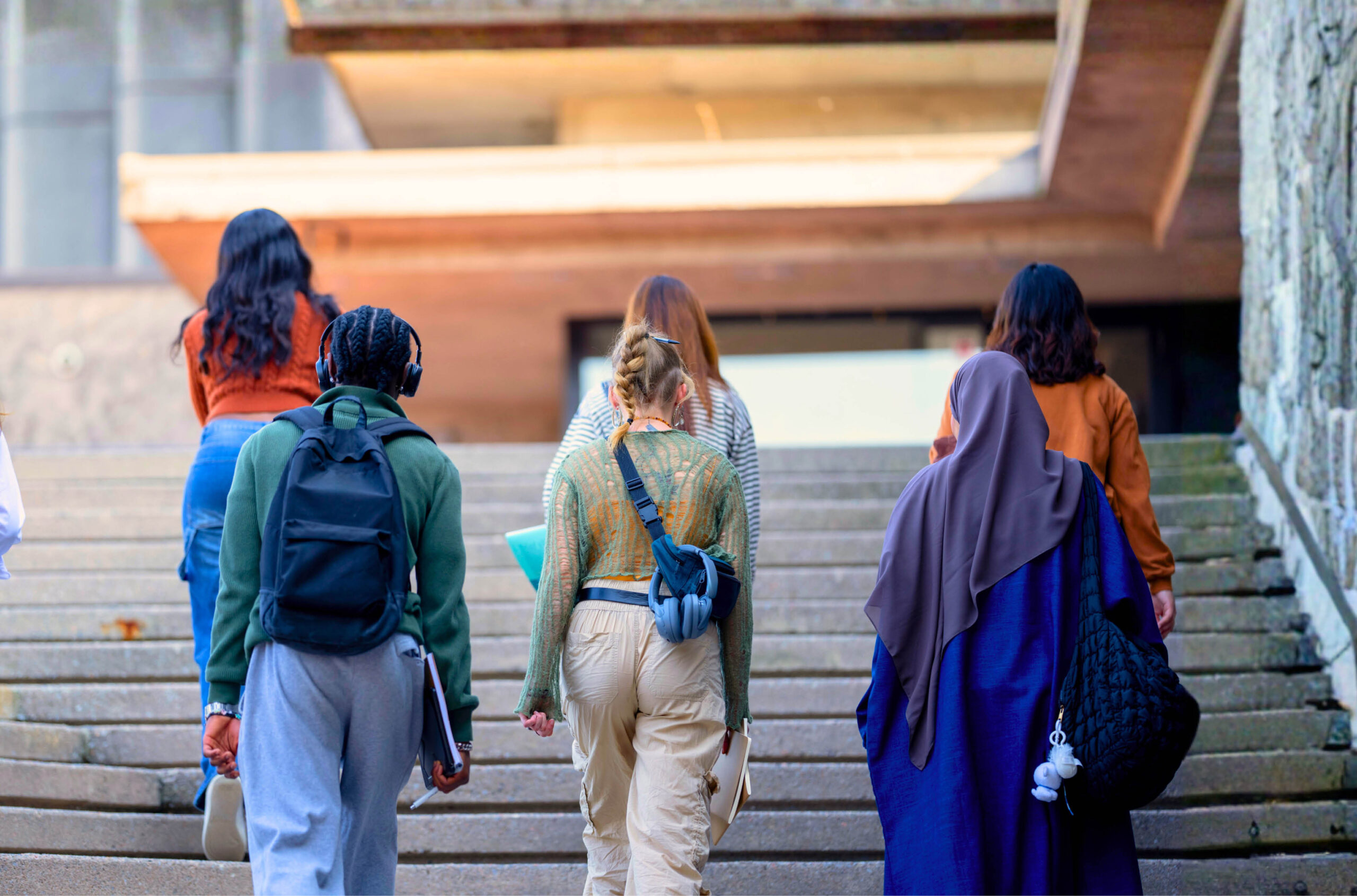Harnessing the full potential of the fourth industrial revolution in higher ed
Universities must work together to find new ways to collaborate and share knowledge using artificial intelligence.

Long before artificial intelligence (AI) became what we know it to be today, biochemist and science fiction icon Isaac Asimov established the three laws of robotics, the first being “a robot may not injure a human being”, followed by “A robot must obey the orders given by human beings.” Never have they seemed more relevant than now in the era of the digital revolution. Technological advances in AI seem to be causing a great deal of anxiety in higher education circles — so much so that some are campaigning for the end of essays as a tool for assessing student learning.
Convinced that AI can help us achieve Sustainable Development Goal (SDG) 4, which is to “ensure inclusive and equitable quality education and promote lifelong learning opportunities for all,” UNESCO is advocating for recognition of AI’s potential to address inequalities in access to knowledge, research and diversity of cultural expression. In 2019, the UN agency launched Artificial Intelligence and the Future of Education, an initiative that aims to explore the challenges and opportunities of using AI in education, particularly in distance learning and personalized learning. Ultimately, the expectation is that it should lead to the creation of an international network of academic centres of excellence in AI and AI-related topics such as ethics and accountability, knowledge sharing, tools and best practices.
On April 8, 2022, the UNESCO executive board adopted the new UNESCO Strategy for TVET 2022–2029: Transforming Technical and Vocational Education and Training for Successful and Just Transitions, which aims to chart a path to recovery, particularly by harnessing technological advances to achieve equitable access to knowledge. Opening the Economic and Social Council Forum on Science, Technology and Innovation, ECOSOC president Collen Vixen Kelapile said that technology and innovation can be a source of awe and fear, but that the balance must be tipped towards hope and these tools must be restored to their rightful place as “the showcase of human ingenuity.”
While many are wary and others unprepared, AI is making significant inroads into higher education, with numerous universities already using AI for teaching and learning. For example, Elizabeth Ellis, head of the school of digital education at Arden University in the U.K., believes AI can take over “the fiddly bits” of academia, such as referencing bibliographies and assessing student work. The Massachusetts Institute of Technology is already using AI to enhance the learning experience, and Stanford University is leveraging it to develop adaptive learning programs to support its students. Other universities have joined the digital revolution and are working to integrate AI more fully into their programs. Delft University of Technology in the Netherlands has created an e-learning lab that uses AI to engage students and help faculty tailor content to better fill learning gaps in the classroom. Meanwhile, the Technical University of Munich (TUM) in Germany has established a Chair of Robotics, Artificial Intelligence and Real-time Systems to explore AI applications in teaching and research. In France, Université Paris-Saclay has become a hub for research into the role of AI in “deep” machine learning, working in partnership with the private sector and the scientific community, as has the MAIA Institute at Université Grenoble Alpes.
While AI holds great promise for higher education, a more thorough analysis of its strengths and weaknesses is needed to realize its full potential.
Regulating the use of AI – One of the risks of AI that many colleges and universities have identified is the collection and management of personal information, raising concerns about ethics and accountability. In response to Italy’s ban on the use of ChatGPT in early April, TUM Professor Urs Gasser argues that we need to establish clear legal rules for AI, rather than banning it outright. Given the infinite possibilities offered by AI, we need to rebalance the pros and cons of technological innovation and adopt a preventive approach so that AI can be used safely and effectively.
More inclusive and accessible learning – To achieve SDG 4, we need to democratize access to knowledge, and the digital revolution offers necessary solutions. With AI, learning can take place in a personalized format, tailored to the needs of the learner. AI can be used not only to personalize learning, but also to develop new pedagogical models and tools for both educators and students. In addition, content can be delivered in audio, video and text formats and in multiple languages. While advances in AI enable the dissemination of knowledge, they also offer opportunities for innovation in access, inclusivity and equity in learning.
Harnessing open access publishing – The increased use of AI has sparked a debate about intellectual property rights in the age of open access publishing. The transformative power of AI-enabled technologies in publishing platforms is undeniable and can help increase exposure and support research. For AI to be truly effective when it comes to data, algorithms need to be of high quality, but most importantly, more data needs to be made available in open access, especially in languages other than English to ensure data diversity. For Kuansan Wang, director of Microsoft Research Outreach Academic Services, there is no doubt that the success of open access requires the technological solutions that AI offers.
More room for collaboration – Academic mobility facilitates collaboration, but travel is not always possible, as the pandemic has shown. Creating collaborative platforms can help overcome the barriers to mobility. The University of Glasgow invested some £116 million (approximately $194 million CDN) to create an advanced research centre, ARC XR, to promote AI-driven collaborative research. Researcher Neil McDonnell thinks it’s time to create an environment so that today’s research will be useful tomorrow.
Human-machine collaboration – The 2019 Beijing Consensus on Artificial Intelligence and Education advocated a humanistic approach to the development and use of AI, so that innovation does not supplant human dynamics in education. While AI provides a virtual environment conducive to teaching, learning and research, the need for face-to-face interaction must not be overlooked. Universities must strive for the best of both worlds, combining on-campus and virtual student activities. Ben Swift of the Australian National University believes that to avoid the future of AI in higher education turning into a dystopia, we need to think about how humans will interact with the technology and the risks that they will change their behaviour as a result.
Certainly, developing and implementing AI in higher education will require an enormous amount of funding, especially for institutions that do not have access to the necessary resources. Universities must work together to find new ways to collaborate and share knowledge using AI, so that higher ed can harness the full potential of the fourth industrial revolution.
Featured Jobs
- Director and Stauffer-Dunning Chair, School of Policy Studies - Associate or Full ProfessorQueen's University
- Psychology - Assistant Professor (Quantitative Methods / Data Science)MacEwan University
- Neuroscience - Assistant ProfessorMacEwan University
- Law - Assistant or Associate Professor (International Economic Law)Queen's University
- Biochemistry, Microbiology and Bioinformatics - Faculty Position (Microbial Systems Biology, Omics Data Analysis)Université Laval











Post a comment
University Affairs moderates all comments according to the following guidelines. If approved, comments generally appear within one business day. We may republish particularly insightful remarks in our print edition or elsewhere.